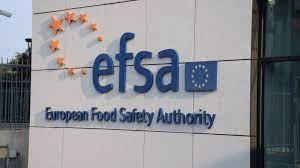 A recent article in the International Journal of Food Microbiology* reviewed available data associated with the incidence of salmonellosis in Europe. The rate remained fairly static from 2015 through 2019 at approximately 20 cases per 100,000 population. A total of 1,508 outbreaks in 34 nations were included in the survey covering the five-year period. Among the geographic regions Europe, Eastern Europe led with 48 percent of outbreaks, Southern Europe, 26 percent, Western Europe 18 percent and Northern Europe 8 percent.
A recent article in the International Journal of Food Microbiology* reviewed available data associated with the incidence of salmonellosis in Europe. The rate remained fairly static from 2015 through 2019 at approximately 20 cases per 100,000 population. A total of 1,508 outbreaks in 34 nations were included in the survey covering the five-year period. Among the geographic regions Europe, Eastern Europe led with 48 percent of outbreaks, Southern Europe, 26 percent, Western Europe 18 percent and Northern Europe 8 percent.
Of the outbreaks in which a vehicle of infection could be identified, 33 percent were attributed to eggs, 14 percent to pork and other red meat and 3 percent to chicken and other poultry. Of the isolates that were serotyped, 62 percent were Salmonella Enteritidis. Salmonella Typhimurium represented 11 percent of all isolates from outbreaks with a known source, predominantly from pork.
 In reviewing the reasons for the high prevalence of SE in Eastern Europe, it is noted that Poland, a large producer and exporter of table eggs, recorded seven percent of layer flocks (169/2,362) as SE positive in 2016. Given that veterinary authorities were negligent in establishing standards for sampling and laboratory examination, the proportion of SE positive layers was probably in excess of the official value. Additional contributory factors affecting the supply chain in Europe include failure to wash eggs in a sanitizer and the absence of refrigeration from pre-packing storage through to point of sale as in the U.S.
In reviewing the reasons for the high prevalence of SE in Eastern Europe, it is noted that Poland, a large producer and exporter of table eggs, recorded seven percent of layer flocks (169/2,362) as SE positive in 2016. Given that veterinary authorities were negligent in establishing standards for sampling and laboratory examination, the proportion of SE positive layers was probably in excess of the official value. Additional contributory factors affecting the supply chain in Europe include failure to wash eggs in a sanitizer and the absence of refrigeration from pre-packing storage through to point of sale as in the U.S.
It is also noted that in many nations in Europe, consumption of raw and undercooked eggs is common. This practice, coupled with SE positive flocks, will contribute to outbreaks. Consumption of undercooked eggs was an important risk factor for outbreaks in the U.S. prior to the introduction of EQAPs and then, subsequently, the Final Rule on Salmonella Prevention issued by the FDA in 2009.
*Pinedo, L. C. et al, Sources and Trends of Human Salmonellosis in Europe, 2015-2019: An Analyses of Outbreak Data, International Journal of Food and Microbiology.doi.org/10.1016/j.ijfoodmicro.2022.109850.